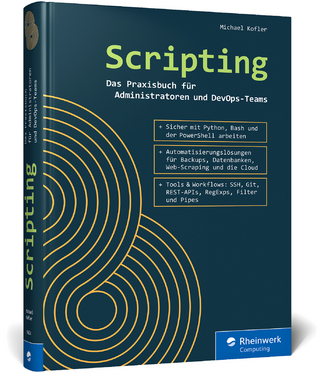
Springer Handbook of Optical Networks
Springer International Publishing (Verlag)
978-3-030-16249-8 (ISBN)
This handbook is an authoritative, comprehensive reference on optical networks, the backbone of today's communication and information society. The book reviews the many underlying technologies that enable the global optical communications infrastructure, but also explains current research trends targeted towards continued capacity scaling and enhanced networking flexibility in support of an unabated traffic growth fueled by ever-emerging new applications.
The book is divided into four parts: Optical Subsystems for Transmission and Switching, Core Networks, Datacenter and Super-Computer Networking, and Optical Access and Wireless Networks.
Each chapter is written by world-renown experts that represent academia, industry, and international government and regulatory agencies. Every chapter provides a complete picture of its field, from entry-level information to a snapshot of the respective state-of-the-art technologies to emerging research trends, providing something useful for the novice who wants to get familiar with the field to the expert who wants to get a concise view of future trends.
Dr. Biswanath Mukherjee is a Distinguished Professor at University of California, Davis, CA, USA, where he was Chairman of Computer Science during 1997-2000. He received his PhD (Electrical Engineering) from University of Washington, Seattle, in 1987, and B.Tech (Hons) (Electronics) from Indian Institute of Technology, Kharagpur, in 1980. He presented the first proposal/prototype for a network intrusion detection system in 1990; today it is a $10B/year industry. Also, in 1990, he proposed and prototyped the first filtering firewall, which is a $8B/year business today. He led the proposal/prototype for the first dynamic bandwidth allocation algorithm in Ethernet-based Fiber-to-the-Home networks in 2002; today over 100 million units are deployed worldwide, including AT&T's Gigabit Fiber offering. In 2007, he provided the first proposal to integrate optical and wireless networks, forming the basis for the fronthaul of the upcoming 5G industry. He was General Co-Chair of the IEEE/OSA Optical Fiber Communications (OFC) Conference 2011, Technical Program Co-Chair of OFC'2009, and Technical Program Chair of the IEEE INFOCOM'96 conference. He is Editor of Springer's Optical Networks Book Series. He has served on eight journal editorial boards, most notably IEEE/ACM Transactions on Networking and IEEE Network. In addition, he has Guest Edited Special Issues of Proceedings of the IEEE, IEEE/OSA Journal of Lightwave Technology, IEEE Journal on Selected Areas in Communications, and IEEE Communications. To date, Mukherjee has supervised 77 PhDs to completion. He is winner of the 2004 Distinguished Graduate Mentoring Award, 2009 College of Engineering Outstanding Senior Faculty Award, and 2016 UC International Community Building Award at UC Davis. He is co-winner of the 2018 Charles Kao Award (named after Nobel Laureate and Fiber-Optic Pioneer Charles Kao) for the Best Paper in the IEEE/OSA Journal of Optical Communications and Networks. He is co-winner of 12 other Best Paper Awards, including four from IEEE Globecom Symposia, four from IEEE ANTS, and two from National Computer Security Conference. He served a 5-year term as a founding member of the Board of Directors of IPLocks, a Silicon Valley startup company (acquired by Fortinet). He was also a Founding Director of an optical startup, Optella, Inc. (acquired by Cosemi, Inc.) He has served on Technical Advisory Board of several startup companies, including Teknovus (acquired by Broadcom). He is Founder and President of Ennetix, a Davis-based, SBIR-funded startup company specializing in AI-powered, application-centric, network analytics for optimal user experience. He is winner of the IEEE Communications Society's inaugural (2015) Outstanding Technical Achievement Award "for pioneering work on shaping the optical networking area". He is author of the graduate-level textbook Optical WDM Networks (New York: Springer, 2006). He co-founded and served during 2007-10 as the Steering Committee Chair of the IEEE Advanced Networks and Telecom Systems (ANTS) Conference (the leading networking conference in India promoting industry-university interactions), and he served as General Co-Chair of ANTS in 2007 and 2008. He was made an IEEE Fellow in 2006. Dr. Ioannis Tomkos is a Research Director at the Athens Information Technology Center (AIT), since 2002, wherein he was/is involved in many (over 25) EU funded research projects with a consortium-wide leading role. He also currently serves as a Consultant for executives of ICT companies and telecom regulators, Business Mentor for ICT start-up company founders and as Adjunct Professor at the College of Optical Sciences of University of Arizona, USA and at the Department of Electrical and Computer Engineering of University of Cyprus Information. In the past, he was Adjunct Professor at Carnegie-Mellon University, USA (2002-2010), Senior Scientist at Corning Inc., USA (1999 - 2002) and Research Associate at University of Athens,
| Erscheinungsdatum | 24.10.2020 |
|---|---|
| Reihe/Serie | Springer Handbooks |
| Zusatzinfo | XXXVI, 1169 p. 838 illus., 102 illus. in color. |
| Verlagsort | Cham |
| Sprache | englisch |
| Maße | 193 x 260 mm |
| Gewicht | 2916 g |
| Themenwelt | Mathematik / Informatik ► Informatik ► Netzwerke |
| Technik ► Elektrotechnik / Energietechnik | |
| Technik ► Nachrichtentechnik | |
| Schlagworte | 5G Networks • Data-center networks • High-performance computers • Optical Communications • Optical networks reference • optical switching • Optical transmission • Submarine networks • Telecommunication networks • Wavelength division multiplexing |
| ISBN-10 | 3-030-16249-4 / 3030162494 |
| ISBN-13 | 978-3-030-16249-8 / 9783030162498 |
| Zustand | Neuware |
| Haben Sie eine Frage zum Produkt? |
aus dem Bereich


